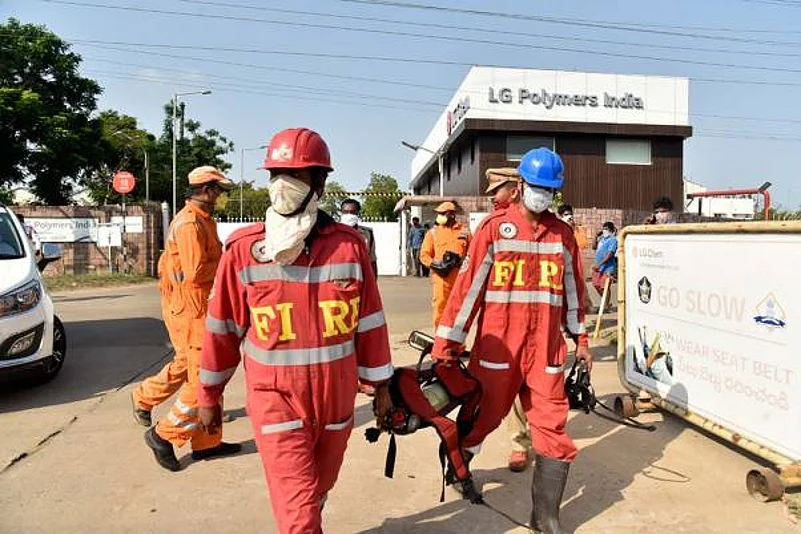Andhra Pradesh woke up to horrific scenes on Thursday morning when dozens of people were seen lying unconscious on roads, footpaths, lanes and inside their house after gas leaked from a chemical plant in a village in Visakhapatnam. The gas quickly spread to villages in a five kilometre radius.
So far, 11 people have died and over a 1,000 have taken ill.
The gas leak happened in LG Polymers, a South Korean promoted plant located on the outskirts of the steel city in RR Venkatapuram village. Residents near the chemical gas plant complained of burning sensation in their eyes and difficulty in breathing. They were immediately taken to hospital.
What is Styrene?
The deaths and the burning sensation was caused due to the Styrene which is a colourless or light yellow liquid primarily used in the production of polysterene plastics and resins. One of the properties of Styrene is that it evaporates quickly.
Styrene is highly flammable and on burning, it releases poisonous gases.
Styrene is used to manufacture plastics and rubbers, which are used in containers for foodstuffs, packaging, synthetic marble flooring, disposable tableware, fiberglass, latex in its liquid form and moulded furniture.
According to US National Library of Medicine, Styrene occurs naturally in some fruits, vegetables, meats, nuts, and beverages in low levels. Cigarette smoke and vehicle exhaust too contain Styrene.
How Dangerous Is Styrene?
According to the Environmental Protection Agency (EPA) of the US, short-term exposure to the substance can result in respiratory problems, irritation in the eyes, irritation in the mucous membrane, and gastrointestinal issues.
Long-term exposure could drastically affect the central nervous system and lead to other related problems like peripheral neuropathy. It could also lead to cancer and depression in some cases.
The symptoms, depending on the degree of exposure, include headache, hearing loss, fatigue, weakness and difficulty in concentrating.
"This gas is not poisonous and hence there is nothing to worry to that extent. If inhaled in large amounts it may be fatal. Gas by itself gives you irritation and causes irritation in mucus membrane," said Director General of Police Gautam Sawang.
He said water acts as an antidote to styrene and those with exposure should douse themselves with water and drink a lot of water.
(With agency inputs)
















